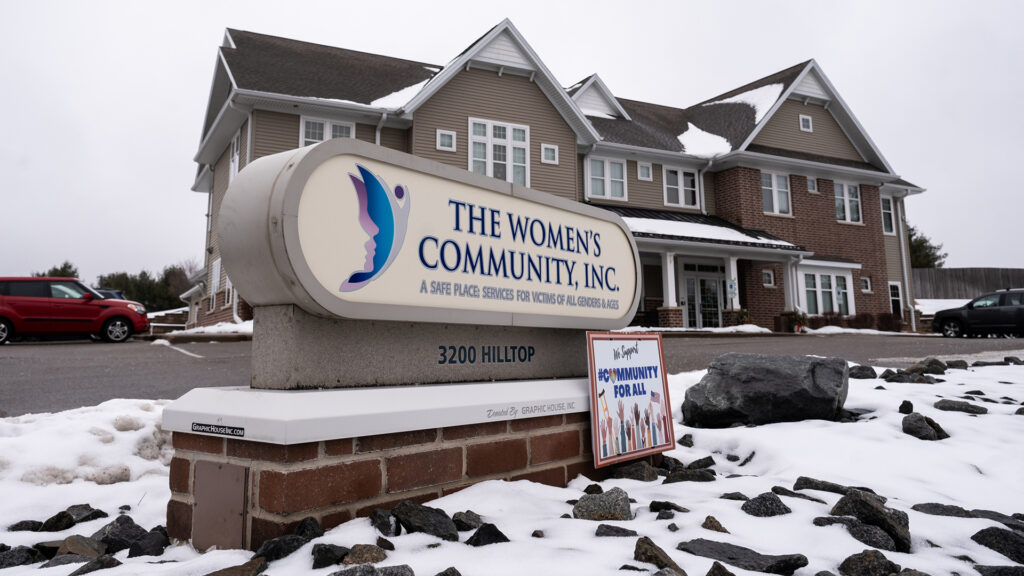

Jen Wang, Wisconsin Watch
This article was first published by Wisconsin Watch, a nonprofit, nonpartisan newsroom.
A $7.4 million pilot project in Wisconsin is helping domestic violence victims in traditionally underserved areas overcome housing and financial barriers that prevent them from leaving abusive partners, researchers said.
In December 2021, the Wisconsin Department of Children and Families awarded funding to nine organizations to provide services to victims of domestic violence through a “Housing First” model that helps victims move into safe, stable housing as quickly as possible and access resources to rebuild their lives.
Each organization can receive up to $200,000 per year to provide services through December 2025.
The funding was provided through the federal Domestic Violence Prevention Services Act and the American Rescue Plan and went to organizations serving clients in Appleton, Bayfield, La Crosse, Ladysmith, Madison, Milwaukee, Sheboygan, Wisconsin Rapids and around Wausau.
Cia Siab, Inc., a La Crosse-based gender and racial justice nonprofit, is using the money to help victims of domestic violence in the close-knit Hmong community through what executive director Song-Shiong calls “kinship care.”
The program pays compensation to family members and others willing to share housing, child care, food and utility costs while Hmong domestic violence victims — who are often the primary caregivers and do not work outside the home — try to escape their abusers.
Xiong said clients are usually cared for by relatives for a few months before moving into their own apartments, adding that the program helps with rent until they are financially independent — a more comfortable environment than living in a shelter with strangers who don’t speak the same language, Xiong said.
“This increases their chances of staying safe and increases their chances of leaving an abusive relationship,” she said.
Another nonprofit that helps Hmong victims of domestic violence, the Wausau-based Women’s Community, has been connecting victims with Hmong landlords who are willing to rent their spare rooms to them. The program addresses the housing shortage, language barriers and trust issues that can arise with landlords outside the Hmong community.
“It opens up a whole new world of possibilities,” said Kate Walsh, an associate professor of psychology at the University of Wisconsin-Madison and part of the team evaluating the effectiveness of the statewide pilot project.
A team from the University of Wisconsin-Madison is collecting survey data from 68 housing recipients at the program’s nine pilot sites. Preliminary findings suggest that more than half of participants across the nine sites have reported reduced exposure to domestic violence and increased satisfaction with their living situation.
Wisconsin is not the first state to pilot a Housing First model of domestic violence: A Washington state study that followed 344 domestic violence victims over two years found an association between Housing First assistance and improved long-term safety, housing stability, and mental health.
Walsh said he expects Wisconsin’s program to continue raising funds after it completes its pilot phase.
“I think this is a really wonderful program that allows for flexibility and respects cultural ties,” Walsh said, adding that the program helps people “at a moment when they need it most.”
Results from the pilot program will inform recommendations from the Department of Children and Families about how best to ensure housing stability for domestic violence victims, and the department continues to discuss broader ways to support organizations that help victims, spokeswoman Gina Page said in an email.
The Wisconsin Legislature approved a bill in the spring of 2024 to address major cuts in federal funding for crime victim assistance programs. Funding under the state bill would last only through the summer of 2025.
The nonprofit Wisconsin Watch is affiliated with WPR, PBS Wisconsin, other news media, and the University of Wisconsin-Madison School of Journalism and Mass Communications. All work produced, published, posted or distributed by Wisconsin Watch does not necessarily reflect the views or opinions of the University of Wisconsin-Madison or its affiliates.
Tara Thomas Agency stands at the forefront of the entertainment industry, with years of experience dedicated to nurturing the most exceptional talents and successful acts.